
Some curiosities about the skin Periérgeia
Skin Diagram Skin Diagram The largest organ in the human body is the skin, covering a total area of about 1.8 square meters. The skin is tasked with protecting our body from external elements as well as microbes. Interesting Note:
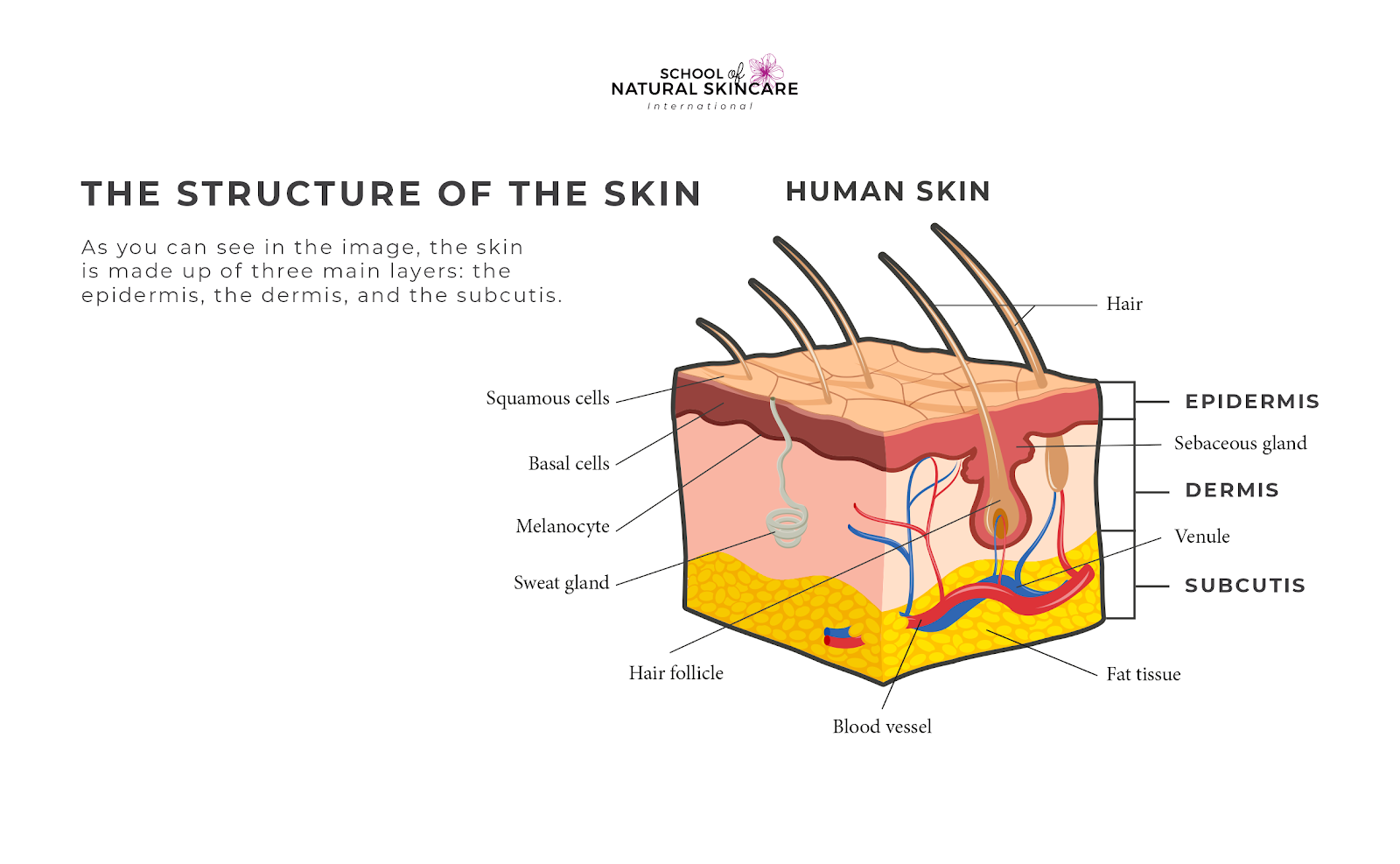
Understanding How Your Skin Works School of Natural Skincare
Stratum basale, also known as stratum germinativum, is the deepest layer, separated from the dermis by the basement membrane (basal lamina) and attached to the basement membrane by hemidesmosomes. The cells found in this layer are cuboidal to columnar mitotically active stem cells that are constantly producing keratinocytes.
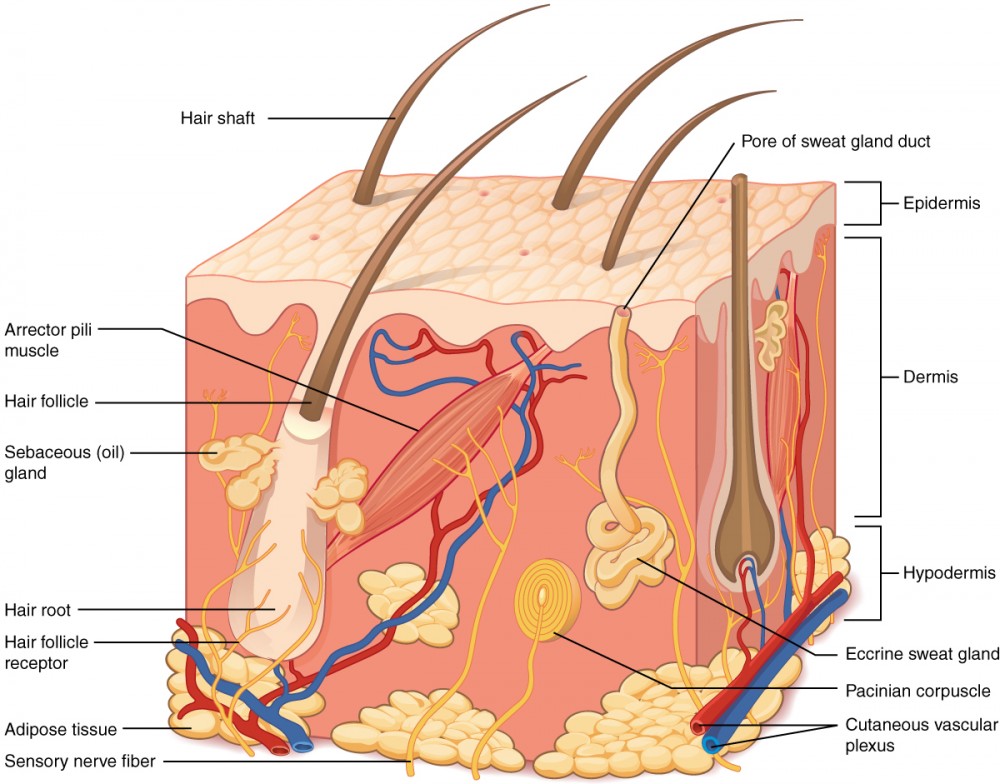
Layers of the Skin Anatomy and Physiology I
The skin is the body's largest organ. It covers the entire body. It serves as a protective shield against heat, light, injury, and infection. The skin also: Regulates body temperature. Stores water and fat. Is a sensory organ. Prevents water loss. Prevents entry of bacteria.
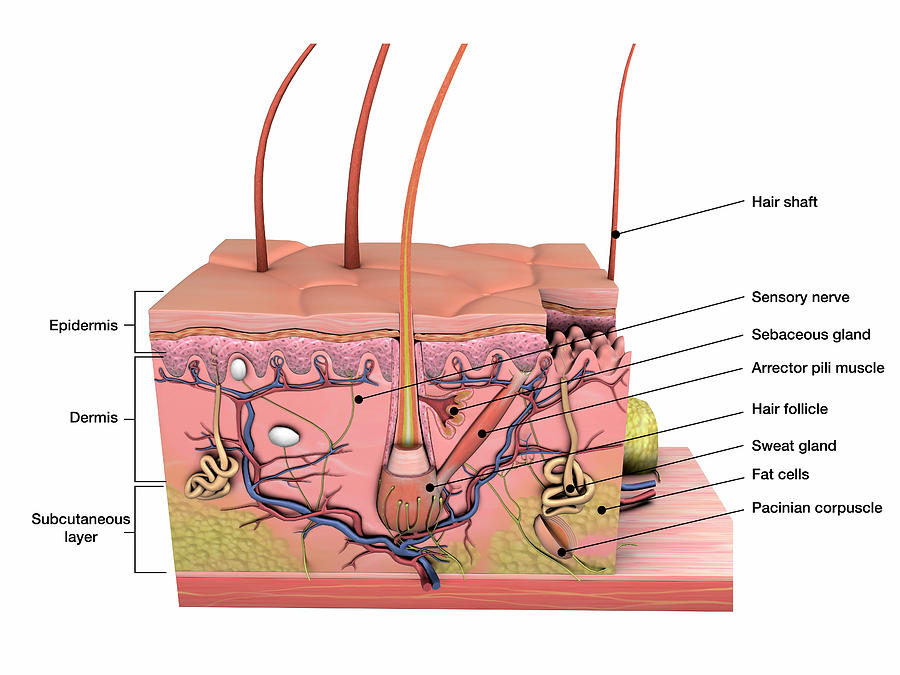
Anatomy Of Human Skin With Labels Photograph by Hank Grebe Pixels
View this animation to learn more about layers of the skin. What are the basic functions of each of these layers? The Epidermis The epidermis is composed of keratinized, stratified squamous epithelium. It is made of four or five layers of epithelial cells, depending on its location in the body.
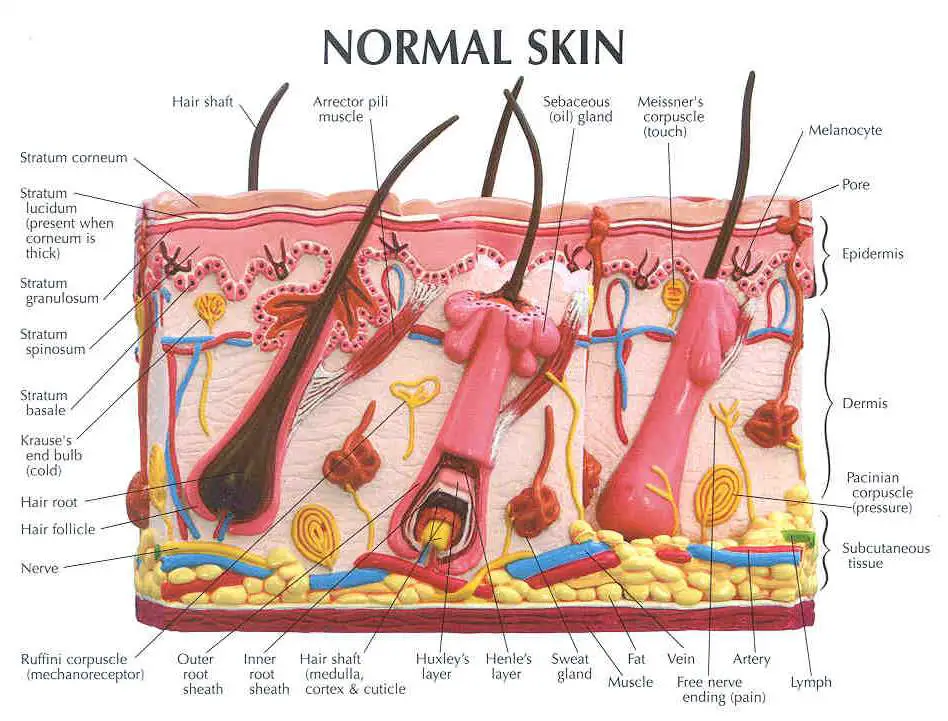
Skin diagram labeled
(USMLE topics) Structure of the skin, layers of the epidermis, skin barrier and pigmentation. Purchase PDF (script of this video + images) here: https://www..

Structure Of Skin Skin Structure and Function LearnFatafat
Your skin continuously communicates with your brain about what is happening around you: touch, texture, temperature, tingling, pleasure, and pain. Your skin, in cooperation with your nervous.

Structure of human skin cells Artofit
1/3 Synonyms: none This article will describe the anatomy and histology of the skin. Undoubtedly, the skin is the largest organ in the human body; literally covering you from head to toe. The organ constitutes almost 8-20% of body mass and has a surface area of approximately 1.6 to 1.8 m2, in an adult.
Schematic representation of skin structure and cell population. The... Download Scientific Diagram
Dermis. Definition. Fibrous and elastic tissue, provides strength and elasticity to the skin and supports the epidermis, home to hair follicles, glands, nerves etc. Location. Term. Papillary Layer. Definition. Upper dermal layer, provides the epidermis with nutrients and regulates body temperature. Location.

loadBinary_006.gif (992×779) Skin anatomy, Integumentary system, Human integumentary system
Epidermis Dermis Subcutaneous fat layer (hypodermis) Each layer has certain functions. Epidermis The epidermis is the thin outer layer of the skin. It consists of 2 primary types of cells: Keratinocytes. Keratinocytes comprise about 90% of the epidermis and are responsible for its structure and barrier functions. Melanocytes.

Skin Structure infographic LifeMap Discovery
Figure 5.1.1 - Layers of Skin: The skin is composed of two main layers: the epidermis, made of closely packed epithelial cells, and the dermis, made of dense, irregular connective tissue that houses blood vessels, hair follicles, sweat glands, and other structures.

The Structure Of Human Skin Cells Stock Illustration Download Image Now Hair Follicle
Spend some time analyzing the skin diagram labeled above. Try to memorize the appearance and location of each structure. Learning the function of each structure will accelerate your ability to memorize, so be sure to check out our detailed article on The Integumentary System parts and functions..

Skin Definition, Structure And Functions Of Skin
The skin consists of three layers of tissue: the epidermis, an outermost layer that contains the primary protective structure, the stratum corneum; the dermis, a fibrous layer that supports and strengthens the epidermis; and the subcutis, a subcutaneous layer of fat beneath the dermis that supplies nutrients to the other two layers and that cush.
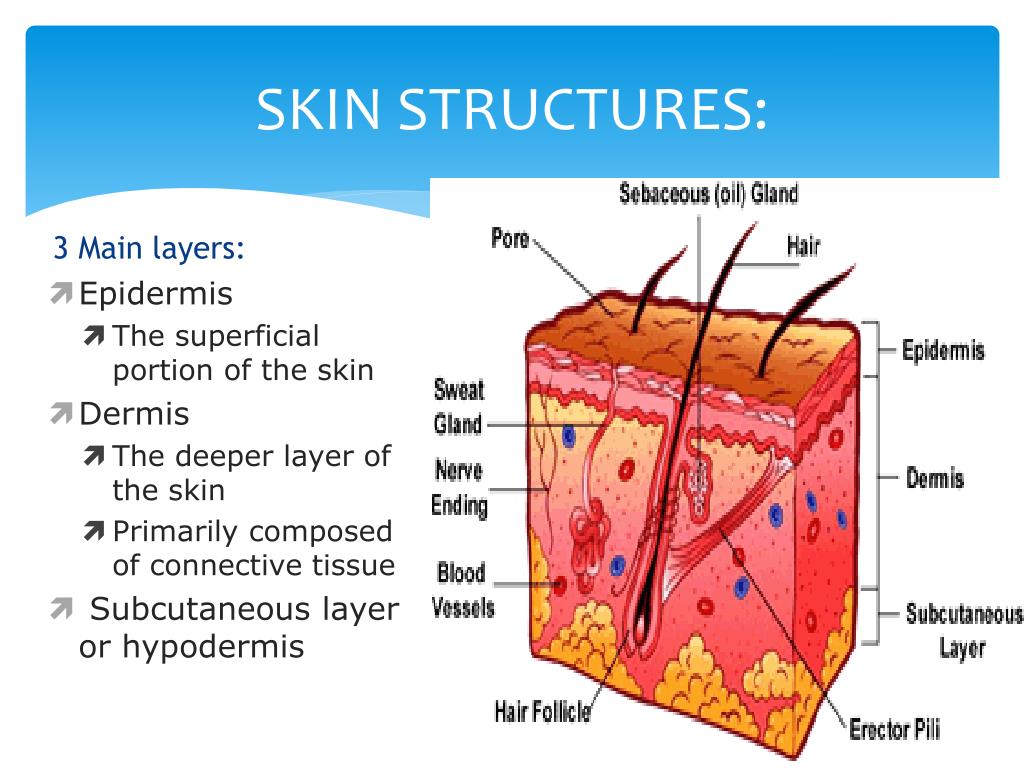
PPT Basic Skin Structure PowerPoint Presentation, free download ID6099891
Diagram of human skin structure. Image. Add to collection. Rights: The University of Waikato Te Whare Wānanga o Waikato Published 1 February 2011 Size: 100 KB Referencing Hub media. The epidermis is a tough coating formed from overlapping layers of dead skin cells.

Human skin diagram Subcutaneous tissue, Skin structure, Epidermis
Skin. As the body's largest organ, skin protects against germs, regulates body temperature and enables touch (tactile) sensations. The skin's main layers include the epidermis, dermis and hypodermis and is prone to many problems, including skin cancer, acne, wrinkles and rashes. Contents Overview Anatomy Conditions and Disorders Care.
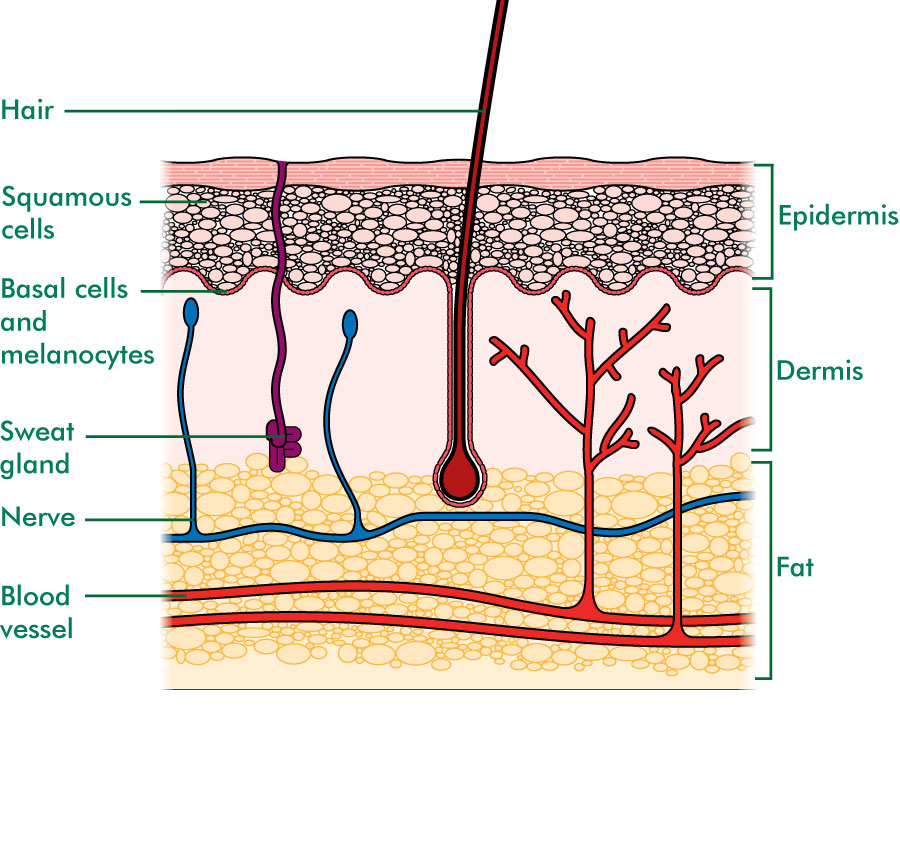
The skin Understanding cancer Macmillan Cancer Support
Julia Benedetti , MD, Harvard Medical School Reviewed/Revised Dec 2021 | Modified Sep 2022 VIEW PROFESSIONAL VERSION Layers of the Skin The skin is the body's largest organ. It serves many important functions, including Protecting the body against trauma Regulating body temperature Maintaining water and electrolyte balance
Skin diagram to label Labelled diagram
Key facts about the integumentary system; Skin: Functions: chemical and mechanical barrier, biosynthesis, control of body temperature, sensory Layers: Epidermis (Stratum Basale, Spinosum, Granulosum, Lucidum, Corneum) and dermis (papillary, reticular) Mnemonic: British and Spanish Grannies Love Cornflakes Hair: Types: vellus and terminal Structure: Follicle and bulb (shaft, inner root sheath.